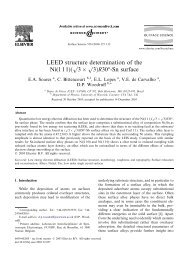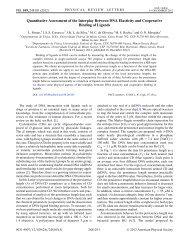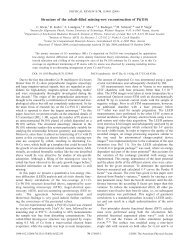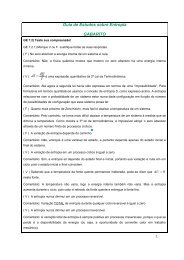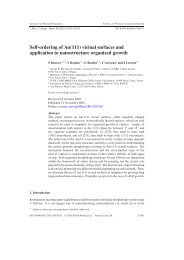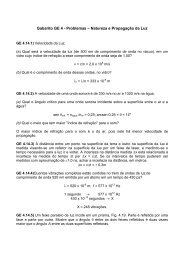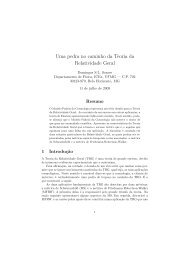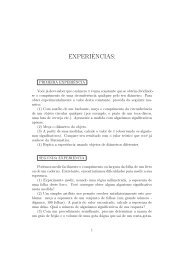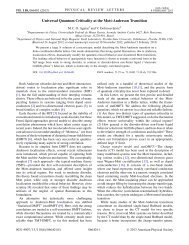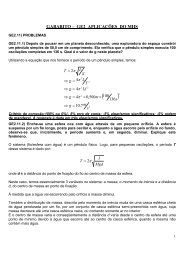Fundamental Statistical Mechanics
Fundamental Statistical Mechanics
Fundamental Statistical Mechanics
Create successful ePaper yourself
Turn your PDF publications into a flip-book with our unique Google optimized e-Paper software.
Define a reduced distribution function that depends on x only:<br />
1<br />
∫<br />
W n (x) = dyρ n (x, y)<br />
0<br />
1<br />
2<br />
= ∫ dyρ n−1 (x 2,2y) + ∫ dyρ n −1 ((x +1) 2,2y −1)<br />
0<br />
1<br />
1<br />
2<br />
Change to a variable y ′ = 2y in the first integral and to y ′ = 2y −1 in the second integral:<br />
Wn (x) = 1<br />
2<br />
1<br />
∫<br />
0<br />
d ′ y ρn−1 ( x 2 , ′ y ) +ρ x +1<br />
( n−1 ( 2 , y ′ ) )<br />
= 1<br />
2 W ⎛ x<br />
n−1⎝<br />
2<br />
⎞<br />
⎠ + W ⎛<br />
⎛ x +1⎞<br />
⎞<br />
n−1<br />
⎝<br />
⎝ 2 ⎠ ⎠<br />
This is the model Boltzmann equation that is associated with the baker's transformation. We<br />
notice that the time is discrete rather than continuous, and that we have selected the x coordinate<br />
for some reason that is not yet clear. It is easy to check that if Wn does not depend on x then<br />
Wn remains constant in time. Thus there is an equilibrium distribution W 0 = constant , which<br />
corresponds to a uniform distribution on the unit x interval.<br />
The H -theorem is constructed in the same way as is done for the Boltzmann equation itself. We<br />
define<br />
1<br />
∫<br />
( )<br />
H n = dxW n (x)ln W n (x)<br />
0<br />
Then H develops in time as<br />
1<br />
Hn +1 = dx 1 2 Wn ( x ( 2 ) + Wn ( )ln<br />
∫<br />
0<br />
.<br />
x +1<br />
2 )<br />
1<br />
2 Wn ( x x +1<br />
[ ( 2 ) + Wn ( 2 ) ) ]<br />
as the function F(y) = y ln y is convex, it follows that 1 a +b<br />
2 ( F(a) + F(b) )≥F( 2 ) . Setting<br />
a = Wn ( x x +1<br />
2) and b = Wn ( 2 ) we have:<br />
Hn +1 ≤ 1 2 dx W n ( x 2)ln Wn ( x 1<br />
∫<br />
2)<br />
0<br />
x +1<br />
x +1<br />
( ( )+ Wn ( 2 )ln( W n ( 2 ) ) )<br />
Change to ′<br />
x = x 2 in the first term, and to ′<br />
x = x +1<br />
2 in the second term, we find:<br />
<strong>Statistical</strong> <strong>Mechanics</strong> Page 42



